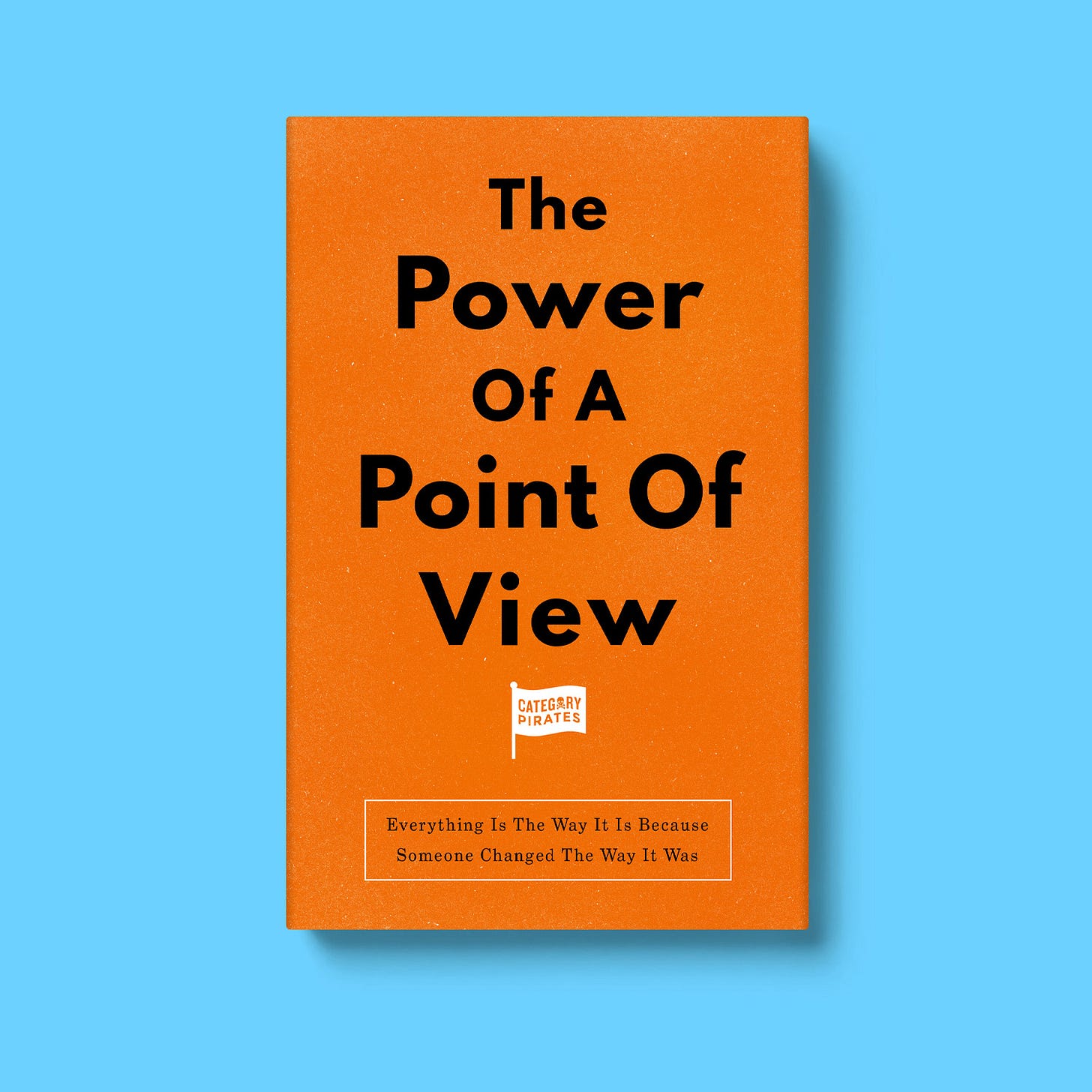The Power Of A Point Of View: Everything Is The Way It Is Because Someone Changed The Way It Was
Thinking about thinking is the most important kind of thinking.
Arrrrr! 🏴☠️ Welcome to a 🔒 subscriber-only edition 🔒 of Category Pirates. Each week, we share radically different ideas to help you design new and different categories. For more: View the mini-book archive | Listen to a category design jam session | Dive into an audiobook | Enroll in the free Category Accelerator email course
Dear Friend, Subscriber, and Category Pirate,
Thinking about thinking is the most important kind of thinking.
This is one of our mantras, and if you’ve been reading Category Pirates, you’ve heard us say this before. That’s because it’s foundational. Not only do we believe it’s worth repeating, but it often takes people a while to truly understand what we mean when we say thinking about thinking is the most important kind of thinking.
You might think you get it—but do you? (Grab a drink and come up on deck!)
Another one of our mantras is this:
90% of what we’ve been taught about entrepreneurship, business strategy, and marketing is wrong.
When we say things like this, we are not trying to be provocative for provocative’s sake.
The core issue is that 100% of what we’ve been taught is based on the past and doesn’t reflect a future where many things might change. Every generation looks and laughs at prior generations and wonders, “How did those prior generations believe that? Look at what we didn’t know!”
Well, why would we assume future generations wouldn’t look at us the same way?
Our job as pirates is to help smart people like you understand the context of what it is you’re looking at and thinking about. And in the world of business, entrepreneurship, and marketing, the vast majority of the conversation (and the advice that gets given as a result) makes one very simple, unconscious, unquestioned, under-discussed mistake:



